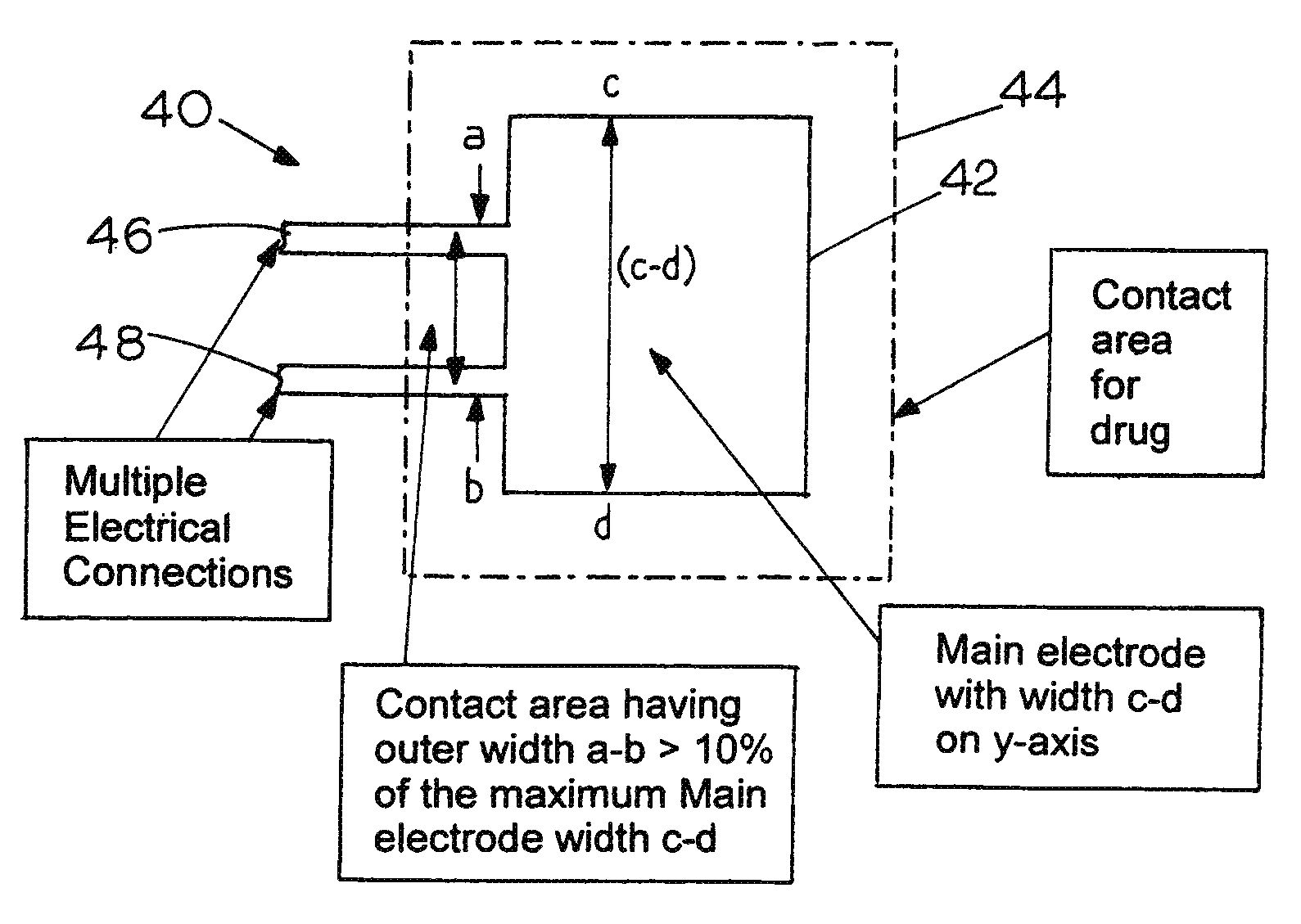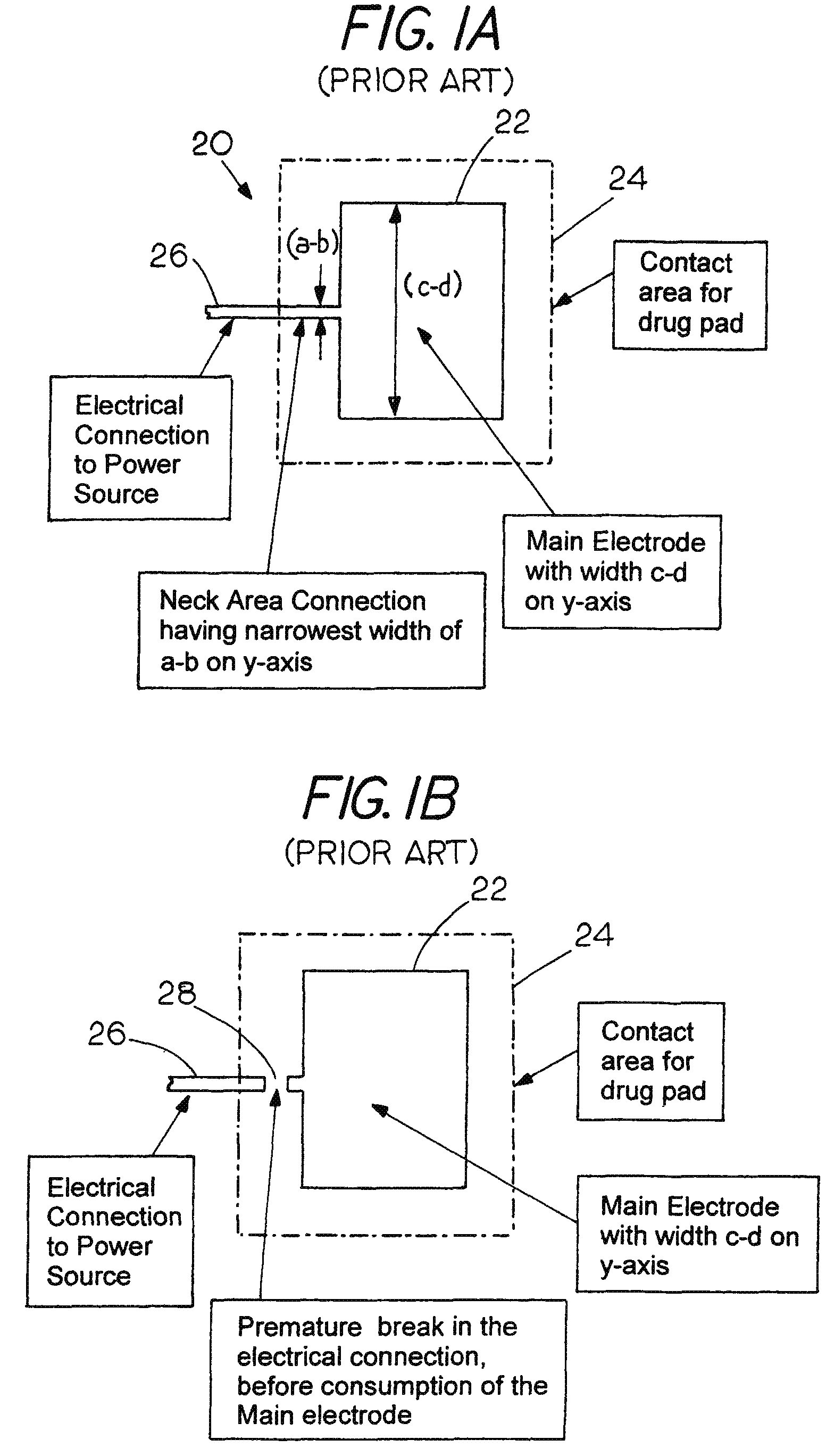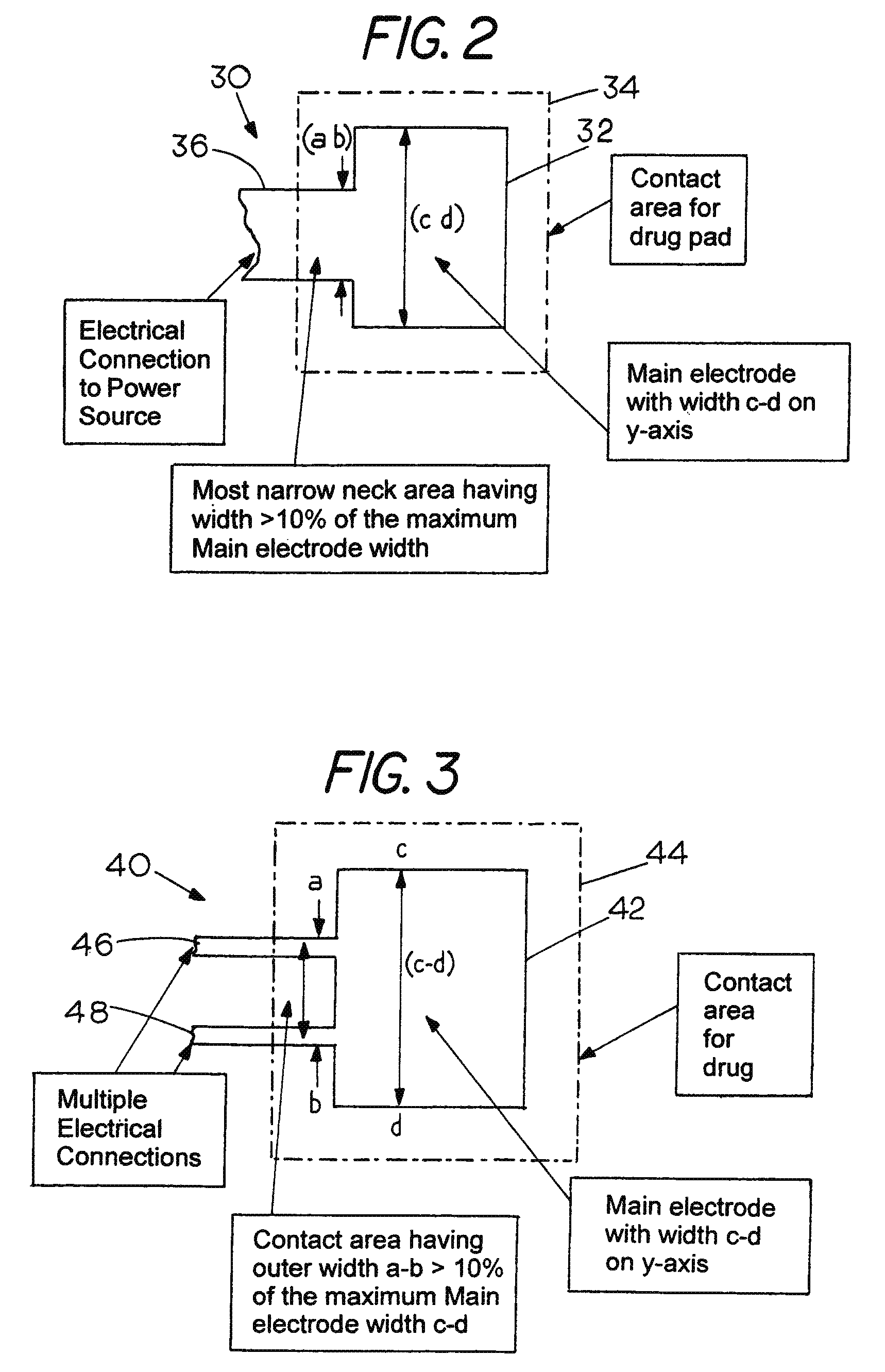Sacrificial electrode design and delivery species suitable for prolonged iontophoresis application periods
a technology of iontophoresis and sacrificial electrodes, which is applied in the field of transdermal delivery system of therapeutic agents, can solve the problems of inconvenient use, affecting the effect of treatment effect, so as to reduce the risk of skin irritation or burns, and reduce the effect of skin irritation
- Summary
- Abstract
- Description
- Claims
- Application Information
AI Technical Summary
Benefits of technology
Problems solved by technology
Method used
Image
Examples
example i
[0064]A wearable electronic drug delivery device was used to demonstrate feasibility of iontophoretic delivery and effect of current on the therapeutic dose of Donepezil HCl delivered in hairless rats, using sacrificial electrodes designed in accordance with this invention.
[0065]Patches consisting of an Ag anode and Ag / AgCl cathode with 7 volts of power were used. A series transistor was used in each patch to set the current to a desired level. Anode and cathode absorbent pads were imbibed overnight with the drug and saline formulation respectively, and used the next day. The current levels set and the expected dose / day (established from previous in vitro measurements of efficiency) are as follows:
[0066]
TABLE IExperimental design showing the treatmentgroups with the targeted doseTargetTreatmentdoseGroup(currentNo. oflevelNo.level)animals(mg / day)1IV3—2Passive40(0 mA)30.13 mA42.540.26 mA45.050.39 mA47.5
[0067]Current was monitored throughout the application period t...
example ii
Primary Skin Irritation Test Results
[0074]PURPOSE: This test was designed to determine the dermal irritation potential of the test iontophoretic patch on the shaved skin of the rabbit, as required by certain regulations for medical device biocompatibility.
[0075]TEST SAMPLE PREPARATION: The test articles were prepared by instilling 0.5 mL of gel onto each electrode pad of the iontophoretic device. The gel was spread uniformly on the pad and allowed to absorb for approximately 24 hours.
[0076]EXPERIMENTAL METHODS SUMMARY: Prior to application, the gel pads were placed on the patches labeled drug and the saline gel pads were placed on the patches labeled saline. In addition, negative control patches were prepared by placing dry pads onto adhesive patches. The prepared patches were applied to the shaved dorsal skin of three (3) adult albino rabbits, two (2) test articles (“drug” and “saline”) and one (1) negative control patch on each side of the paravertebral skin. The trunk of each ani...
example iii
Repeated Patch Dermal Sensitization Test
Buehler Method Modified for Medical Devices
[0086]PURPOSE: This test was designed to evaluate the allergenic potential or sensitizing capacity of the iontophoretic test article. This test was used as a procedure for the screening of contact allergens in guinea pigs and extrapolating the results to humans, but does not establish the actual risk of sensitization in humans.
[0087]TEST SAMPLE PREPARATION: The test article consisted of an iontophoretic device having electrodes of this invention, with white adsorbant pads having clear drug and saline gels.
[0088]EXPERIMENTAL METHODS SUMMARY: Ten test guinea pigs were patched with the test article and five guinea pigs were patched with a control blank. The bandages and patches were removed after six (6) hours of exposure. After a 24 hour rest period, each site was observed on each animal for erythema and edema. This procedure was repeated once per week for three weeks for a total of three applications. ...
PUM
 Login to View More
Login to View More Abstract
Description
Claims
Application Information
 Login to View More
Login to View More - R&D
- Intellectual Property
- Life Sciences
- Materials
- Tech Scout
- Unparalleled Data Quality
- Higher Quality Content
- 60% Fewer Hallucinations
Browse by: Latest US Patents, China's latest patents, Technical Efficacy Thesaurus, Application Domain, Technology Topic, Popular Technical Reports.
© 2025 PatSnap. All rights reserved.Legal|Privacy policy|Modern Slavery Act Transparency Statement|Sitemap|About US| Contact US: help@patsnap.com



